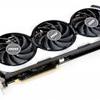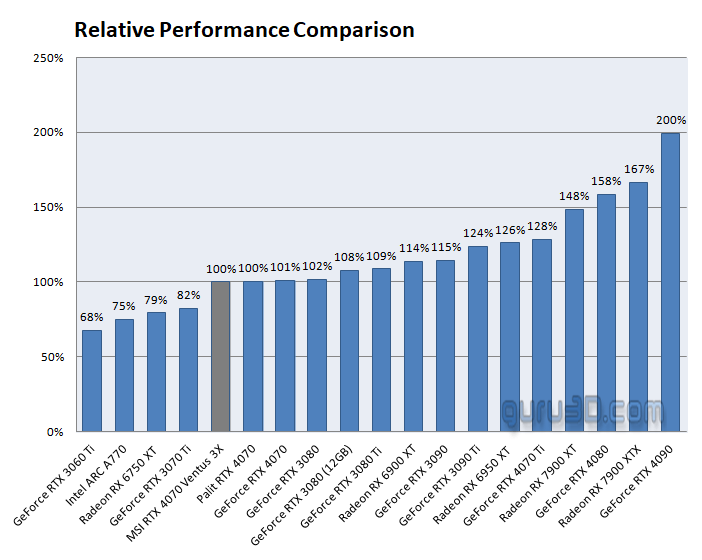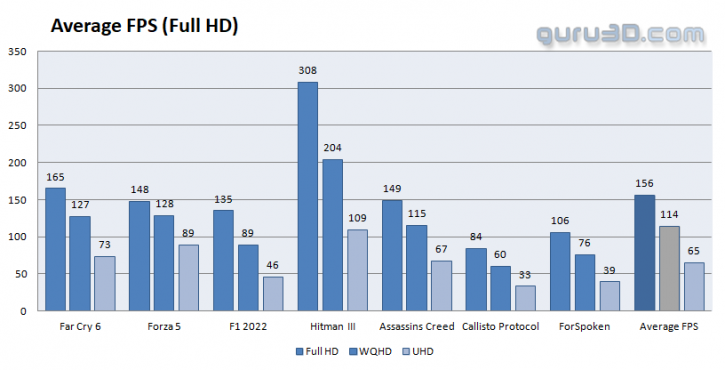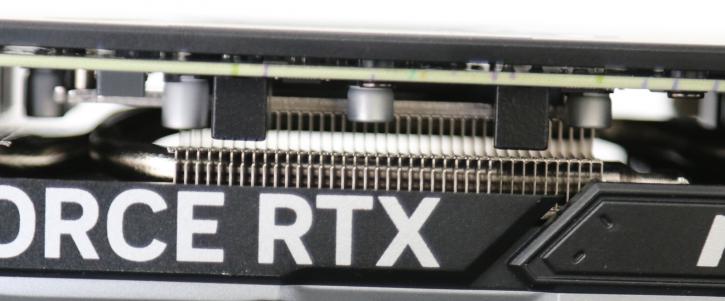Final words and conclusion
Final words
We evaluated MSI's MSRP-based Ventus 3X series motherboard. As opposed to other manufacturers who only provide their high-end products for review, we appreciate the opportunity to present our readers with a comprehensive perspective, encompassing both top-tier and reasonably priced options. The graphics card performance receives minimal criticism, except for the lack of a little extra on the power limiter. Also, thermals show that the top side VRM gets hot. The temperatures remain within tolerable limits, however they do not sit well with me. In terms of performance, the MSI Ventus 3X delivers standard results within a 1% differential in favor of the founder edition card. However, with a simple manual tweak, users can easily achieve an additional 5% performance. NVIDIA has released the GeForce RTX 4070, the latest addition to the ADA product line. With its more affordable price point, this graphics card is now within reach for many end-users. Although NVIDIA heavily promotes the DLSS technology as a game-changer, we hope they won't overlook the importance of raw rasterizer shader performance in future products. The GeForce RTX 4070 boasts a powerful architecture, advanced ray tracing capabilities, and enhanced DLSS technology, significantly improving its performance over its predecessors. However, its performance can fluctuate in less CPU-bound situations, and it may be a bit slower in DX11 yet faster in DX12. Compared to Radeon Series 6000/7000, the RTX 4070's ray tracing performance is faster overall, showing notable advancements in this field. Moreover, with the DLSS3+ Frame generation technology, the GPU can create miracles in games that support it.
Performance
The RTX 4070 offers nice gaming performance and rendering quality. This graphics card offers raw performance levels that enable gaming at 4K resolution, although it's primarily designed for WQHD. With most gamers playing at UWHD, QHD, or UHD monitor resolutions, the 4070 strikes a balance that will appeal to many enthusiasts. Compared to AMD's offerings, the Nvidia GPU will struggle to keep up with the $200 more expensive Radeon RX 7900 XT, but it still has several positive aspects. For example, the DLSS (3) and ray tracing features perform exceptionally well, giving gamers an immersive experience that AMD can't match now. Let's fire up a charts to compare a bit.
The old rasterizer engine breaks right through the previous limit of extreme performance. The RTX 40 series now has a new generation of Ray tracing and Tensor cores that are more powerful. So, do not let the specific RT and Tensor core counts fool you; it's all about how much performance one unit offers. Since they are close to the shader engine, they have become more efficient, which shows. Tensor cores are harder to measure, but from what we have seen, everything seems to be in good shape, as DLSS3 shows exciting values.
Overall, the GeForce RTX 4070 makes sense at resolutions as low as 2K 2560x1440, and sometimes up to 4K (3840x2160). NVIDIA proclaims this as a 100+ FPS WQHD card, with which we concur.
Cooling & noise levels
Under heavy full load, the card tested uses about ~195 Watts (average). This Wattage is directly related to how much heat the GPU, which sits inside a closed case, gives off. The model in this review boasts a two-slot cooler that performed exceptionally well during our tests, effectively cooling the card's components. Furthermore, the card's fan stop mode is entirely silent in 2D applications. For acoustics, we reached 33~34DBa, which is a very nice acoustic level by today's standard. Expect the card to reach 65-70°C when stressed in a closed chassis. This value can differ depending on how well air moves through your chassis.
FLIR imaging shows a lot of heat at the top side of the card; MOSFETs and chokes here are now cooled by the heatsink and thus ooze hot air. The above photo identifies the root cause of the issue here. No padding, no touching, any heatsink. However, they produce numbers within an acceptable margin even at these temps.
We presented our finding to MSI, and they performed an extra run in a test chamber @ 30 degrees (ambient) and found a similar temperature at the heat spot with 89-90 degrees while the GPU was heated up to 65 degrees. Engineering got back to us saying that they produced similar results, but they pass internal validation, ergo they deem this to be normal/expected behaviour. .
Energy consumption
We touched the topic in the previous chapter; the power draw under intensive gaming for GeForce RTX 4070 is quite okay. We measured it close to the 190 Watt range (TBP). This is the tradeoff for a bit more bite in performance for this graphics card model in particular. Gaming wise, that number will fluctuate a bit; however, 185 Watt will do in no time. We expect the board partner cards to show higher numbers as they get more TGP allowance. When looking at TGP we write down an average power consumption of 185 (TGP) at Ultra HD based on the reference test. The card's TDP of 185 (see below) was measured over five games. The RTX 4070 comes with a converter that allows turning 8-pin PCIe power connectors into a single 12-plus-four-pin 12VHPWR. However, many board partner cards will still have the traditional 8-pin header on board.
Coil whine
Any GeForce RTX 4070 can exhibit coil squeal. It's just a matter of how much exactly. Well, it's at a level you can hear when you hit high framerates. In a closed chassis, that noise would fade away in the background. For this particular card we've hardly been able to notice it.
Pricing
The NVIDIA GeForce RTX 4070 has a price tag of $599, which many gamers may find steep for a graphics card. Comparatively, that's still more expensive than a modern console, which can be a turnoff for budget-conscious gamers. Also remember that premium AIB card designs come with an additional cost. Unfortunately, in Europe, the price range is even higher, ranging from 700-800 EUR. Despite this, the NVIDIA GeForce RTX 4070 is one of the more advanced and complete graphics cards available, offering high-quality performance and a range of impressive features that justify the price.
Tweaking
By adjusting the clock frequency and memory speed, you can see a boost in your GPU's performance. While there is no power limiter (increase) in Watts available, these tweaks can provide an extra performance on the card's default power budget, resulting in a clock frequency boost of +150~200 MHz. With these tweaks, you can expect to see your GPU boost clock hovering around the 2900~3000 MHz range (depending on the game title's dynamic frequencies). Additionally, you can tweak the memory speed to 23 Gbps, resulting in an additional 5% performance on challenging GPU situations compared to the reference performance.
Conclusion
The MSI Ventus 3X graphics card offers a solid baseline level of performance, comparable to the founder edition card. It is an option for users who require Wide Quad HD performance at an affordable price point. The card boasts impressive capabilities for WQHD performance, silent operation, and an efficient cooling system. However, it's worth noting that the topside of the card may run hot under game render stress. You can enhance the card's performance by taking advantage of the games that support DLSS(3). It has to be stated, though, the founder edition card is the better one. It offers roughly the same performance but remains the more silent product. And if looks matter, you'll probably agree with me on that. The RTX 4070 graphics card offers impressive performance and visual quality and improved power efficiency and thermals, making it an eco-friendly option. It effortlessly handles high-resolution gaming and complex creative workflows with HDMI 2.1 support and increased VRAM capacity (12GB). When choosing between the RTX 4070 and Radeon RX 6800 (XT), it's important to consider factors such as raytracing performance and DLSS3, which the RTX 4070 excels at. A bit newer, the Radeon RX 7900 XT offers faster rasterizer engine performance with an additional L3 cache, making it a strong(er) contender for the RTX 4070. The RTX 4070 is priced $200 lower, so perhaps it offers more value for money or is better in reach for you. Performance-wise, you can compare the card with RTX 3080 performance levels depending on where you measure. Overall, the RTX 4070 series edition is an attractive option for those looking for a visually appealing graphics card for their white-themed build. This graphics card has plenty of oomph up to even Ultra HD gaming (especially with DLSS3 / Frame generation enabled) with the option for a mild overclock. Overall, the Ventus 3X edition GeForce RTX 4070 is interesting. However, it competes with a very proper founder edition card that is a notch faster and has an extended power limiter, likely making it a more attractive product to get.
- Download NVIDIA GeForce drivers
- Sign up to receive a notification when we publish a new article.
- Or go back to Guru3D's front page
- Hilbert, LOAD"*",8,1.





